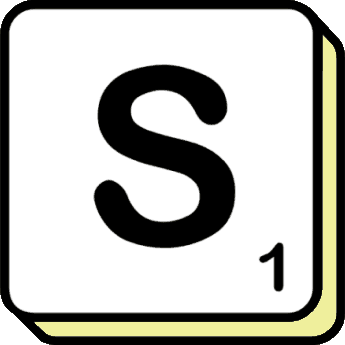Exclamation Mark: The Punctuation Point of Emotion and Emphasis
Author: Brian Bowman
Date Published: 6 December 2023
In the world of punctuation, the exclamation mark stands out as one of the most recognizable and potent symbols. It's the champion of emphasis, excitement, and emotional expression in written language. In this article, we'll delve into the fascinating history, uses, and impact of the exclamation mark, exploring its role in conveying enthusiasm, surprise, and intensity in our written communications.

A Brief History of the Exclamation Mark
The exclamation mark, also known as the exclamation point, has a long and interesting history. Its origins can be traced back to ancient Latin, where scribes used the word "io" to indicate joy or exultation. Over time, this abbreviation evolved into the modern exclamation mark (!) we know today.
During the Middle Ages, exclamation marks were often employed in religious texts to emphasize sacred passages. They also appeared in medieval manuscripts as a way to draw attention to particularly significant sections of text. While the symbol existed, its usage wasn't standardized, and it wasn't until the 15th century that it began to take on its contemporary form and function.
The Role of Emphasis and Emotion
The exclamation mark plays a crucial role in written language by adding emphasis, emotion, and clarity to our words. It serves several key functions:
1. Expressing Strong Emotion: The primary role of the exclamation mark is to convey strong emotions such as excitement, joy, astonishment, or even anger. In texts and emails, it's often used to infuse the written word with the fervor of spoken language.
Example: "I can't believe we won the game!"
2. Signaling Urgency: Exclamation marks are also used to indicate urgency, whether in safety warnings, emergency notices, or commands.
Example: "Fire! Evacuate the building immediately!"
3. Indicating Surprise: When something is unexpected or astonishing, an exclamation mark helps to highlight that element of surprise.
Example: "She just got promoted out of the blue!"
4. Adding Enthusiasm: In marketing, persuasive writing, or when expressing enthusiasm, the exclamation mark can infuse a sense of excitement and positivity.
Example: "Join us for an amazing adventure!"
Correct Usage and Overuse
While exclamation marks are valuable for emphasizing emotions and adding excitement, their overuse can dilute their impact and make writing appear overly dramatic or insincere. To maintain their effectiveness, it's essential to use exclamation marks judiciously.
Here are some tips on using exclamation marks effectively:
1. Use sparingly: Reserve exclamation marks for moments that truly warrant emphasis or emotion. Overusing them can make your writing seem forced or unprofessional.
2. Consider your audience: The appropriateness of exclamation marks varies by context and audience. In formal writing, such as academic essays or professional emails, use them sparingly. In informal communication, like text messages or personal letters, you can be more liberal.
3. Balance with other punctuation: When emphasizing a point, consider alternative punctuation, like colons, semicolons, or italics, to avoid overloading your text with exclamation marks.
The Impact of Digital Communication
With the rise of digital communication and social media, the exclamation mark has gained even more prominence. It's often used to convey tone and emotion that might be missing in written messages, where nonverbal cues are absent.
For instance, in a text message, a simple "Thank you" can be interpreted differently based on the presence or absence of an exclamation mark. "Thank you!" expresses a warmer and more enthusiastic tone compared to "Thank you," which may appear more reserved.
The Multilingual Role
The exclamation mark is not limited to English; it's a universal symbol used in various languages to convey emphasis, emotion, and surprise. While its shape and placement may differ slightly in different scripts, its purpose remains the same: to grab the reader's attention and convey the writer's feelings.
In Conclusion
The exclamation mark is a versatile and indispensable punctuation mark that enriches our written language by adding intensity, emotion, and emphasis. Used thoughtfully and selectively, it enhances the clarity and expressiveness of our written communication, ensuring that our enthusiasm, astonishment, and urgency shine through in a world of written words. So, the next time you reach for that exclamation mark, do so with intent, and let your writing burst with the energy and passion you intend to convey!
